The Meizu MX4 Pro Review
by Andrei Frumusanu on February 16, 2015 2:00 AM EST- Posted in
- Smartphones
- Exynos
- Mobile
- Meizu
GPU Performance
The Exynos 5430's Mali T628MP6 at 600MHz should be a predictable test candidate now that we have scores from Note 4's Exynos 5433 and Huawei's Kirin 920 devices. The MX4 Pro should perform slightly worse than the 5433. Meizu maintains the ALU load percentage based scaling logic that I've covered in the Note 4 Exynos review, meaning that ALU heavy loads allow the GPU to scale up to 600MHz while more traditional loads will limit the GPU to 550MHz.
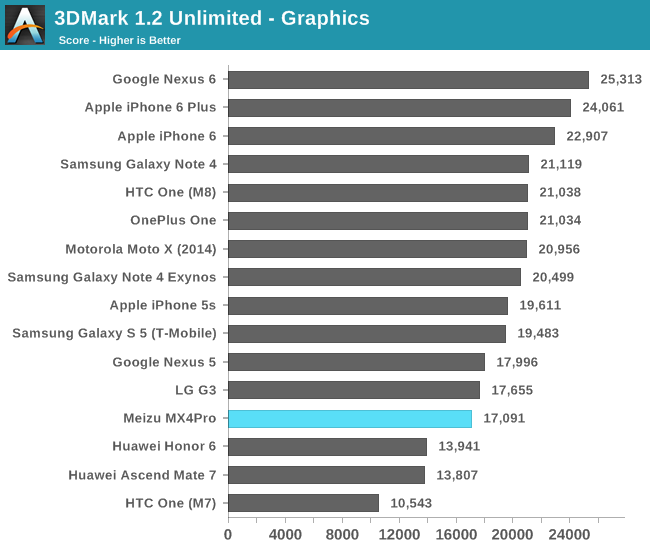
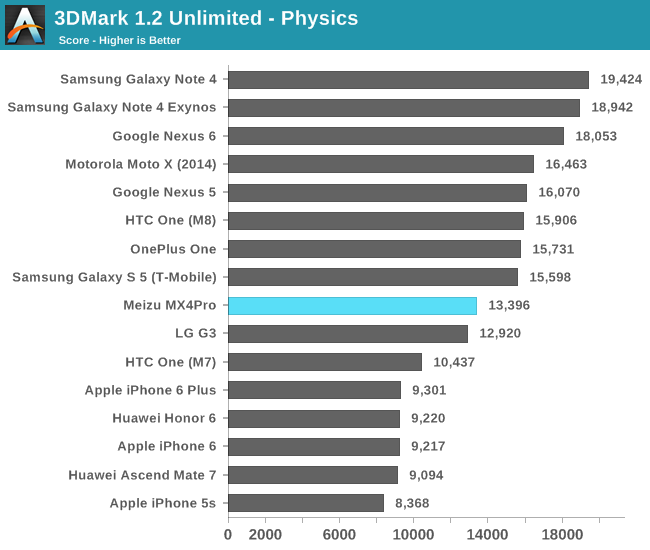
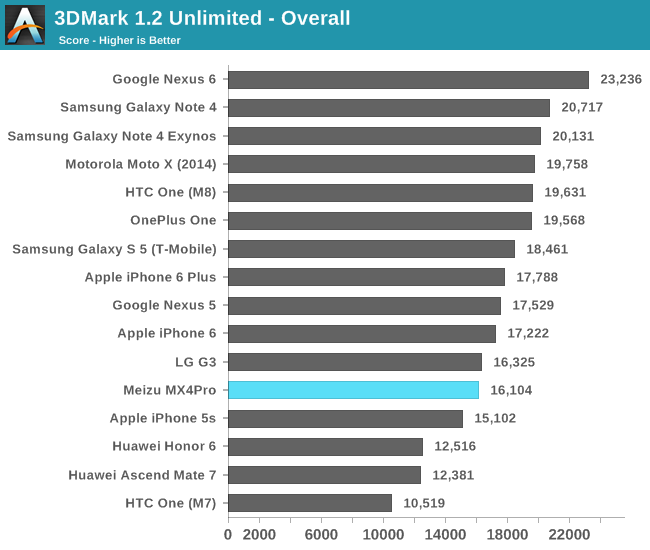
In the 3DMark Unlimited Graphics test we see how the Mali lands more or less where we expected it, worse than the Note 4 and better than the Huawei units. The physics score is still a strongly CPU-bound test and the weaker A7 cores of the 5430 are what is used during most 3D loads.
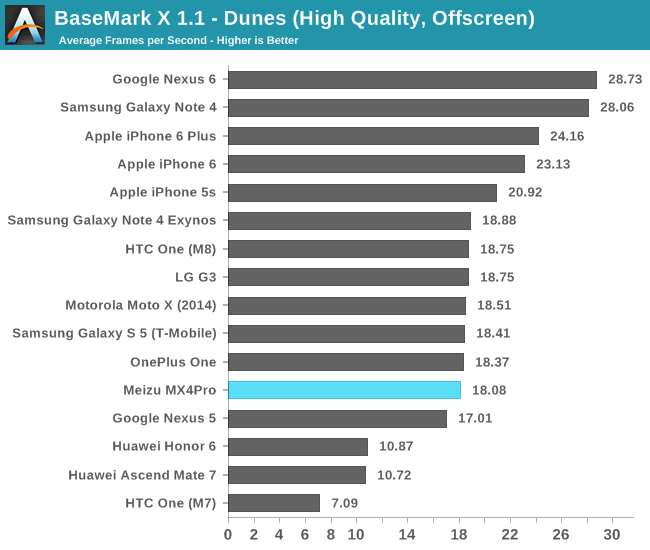
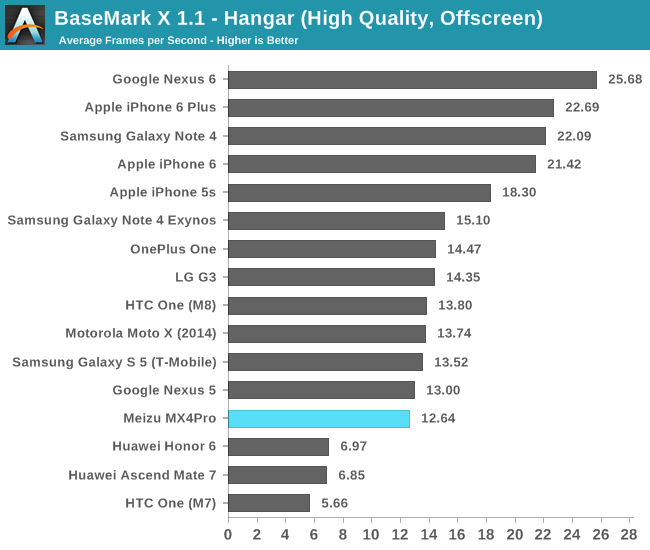
As we move on to BaseMark X, we're getting into more pure 3D loads that are not as affected by CPU speeds. Here we see the Mali T628MP6 outperform the Kirin 920 by much more than what we would expect from 50% more cores on the MP4 configuration. I've mentioned in the Note 4 review that Samsung has dedicated and added a lot of cache in the Mali's in the 543X Exynos SoCs, and this delta might very well be a result of the modified implementation. The MX4 Pro is on the heels of Adreno 330 devices.
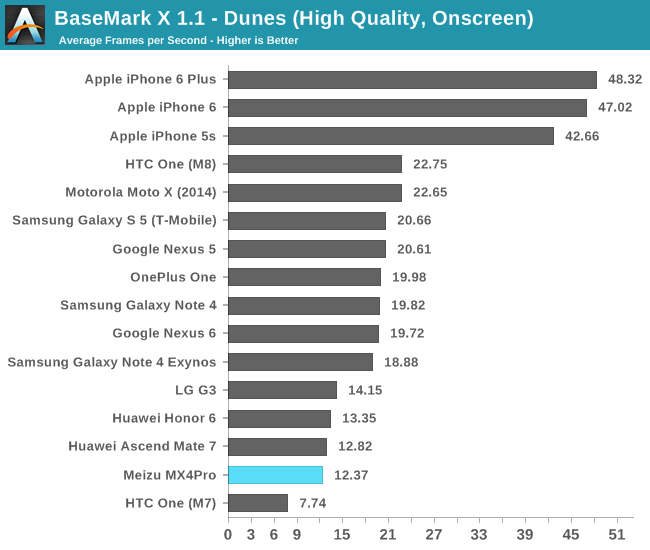
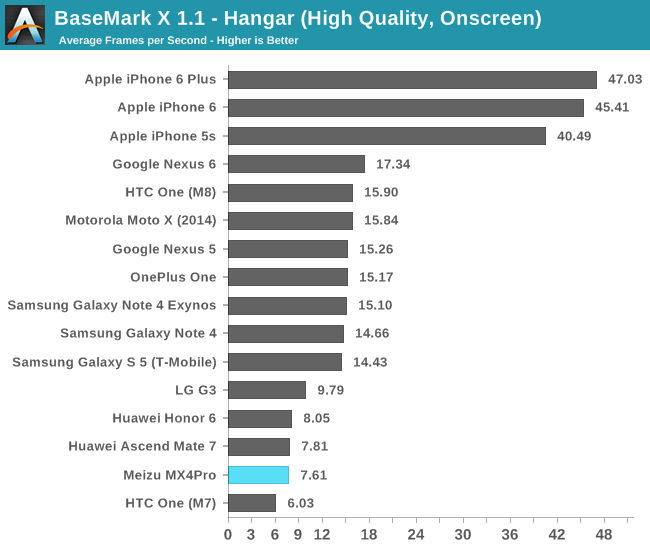
The higher-than-QHD resolution of the MX4 Pro drags down the on-screen scores by a significant amount. There seems to be a bandwidth bottleneck here as the device doesn't manage to outperform the Kirin devices.
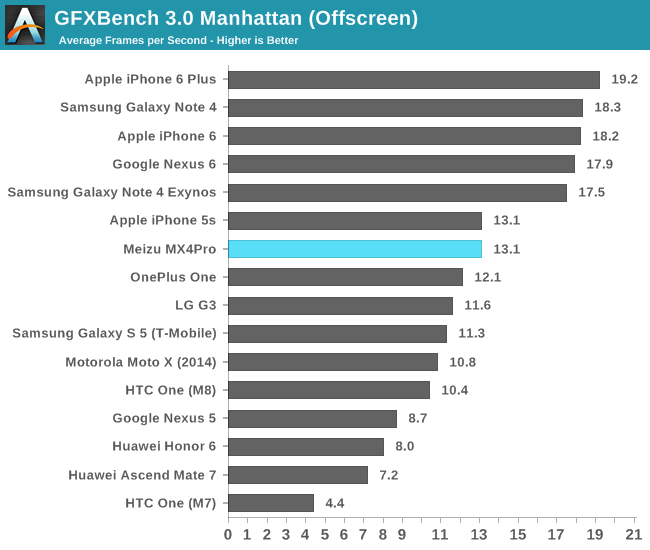
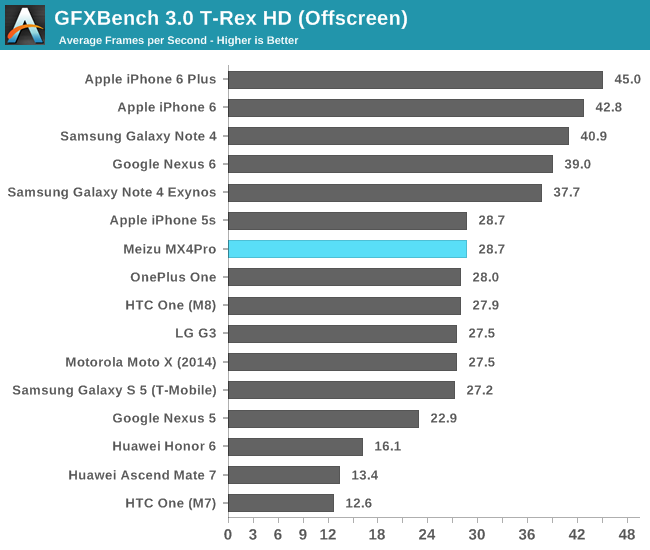
The Manhattan and T-Rex off-screen scores again put the Exynos 5430 at the level of the Adreno 330.
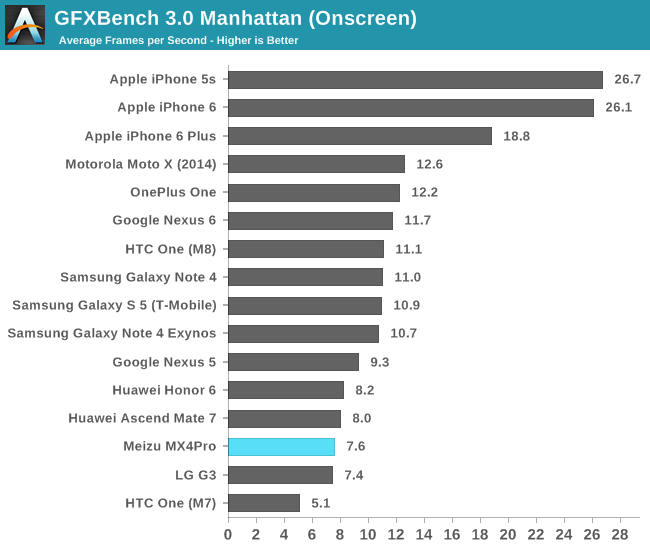
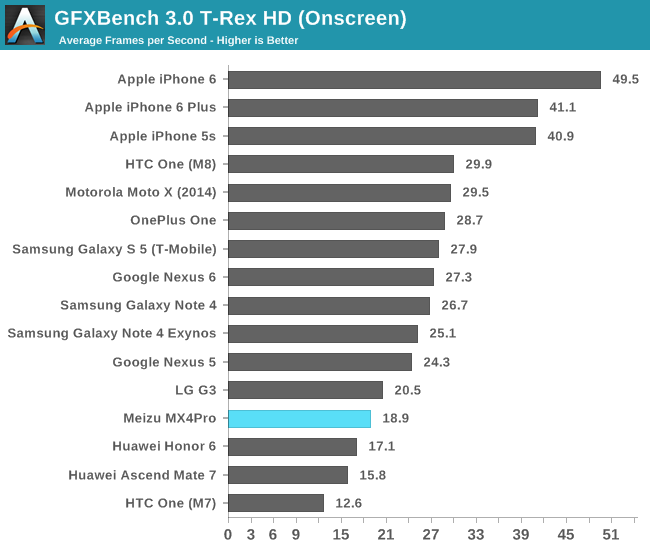
The onscreen scores again reverse the scores and put the Mali at a greater disadvantage. It seems while the Exynos 5430 is able to properly keep up at 1080p resolution, the performance degradation when switching to 1560p is quite large.
GPU Power
The Note 4 review started something that I hope to continue in the future whenever a device allows me to do a full power analysis. The MX4 Pro is luckily one of those devices, and I was able to measure some interesting figures that I'll be getting into more in the battery life section. For now, I present some isolated GPU power figures employing the same methodology that I've used for the Exynos 5433, meaning the system is limited to the little cores and the device's screen power is subtracted from the off-screen tests of GFXBench.
While the MX4 Pro and the Galaxy Alpha both employ the same SoC, the rather massive difference between the two comes from the fact that my Alpha test unit had the second-worst chip bin possible, having much higher voltages than what the MX4 Pro is running on its Exynos 5430. My Meizu unit has a median-tier bin, which is something that a larger amount of people should be able to enjoy. On average we see a 62.5mV voltage drop throughout all the GPU frequencies.
The end result is that the MX4 Pro roughly consumes a full 1W less than the Alpha. Shaving off 25% of power consumption just by having a different chip bin demonstrates how volatile device benchmarking can be, as the review units we receive can be very different to what another site tests, not to mention user devices. As I continue to collect more data I hope that we can do a full competitive analysis of the SoC market in the future.











70 Comments
View All Comments
blackmagnum - Monday, February 16, 2015 - link
Have you checked that it was not programmed with a backdoor that could access your personal information? Right? Just checking.WorldWithoutMadness - Monday, February 16, 2015 - link
Well, you can't really know. What if they installed it from the hardware to software?If you don't trust these technologies then just buy your own country phone. Even if they do access your personal information, you can blame your country for it
Murloc - Monday, February 16, 2015 - link
most of the stuff in any phone is made in China so...StevoLincolnite - Monday, February 16, 2015 - link
They can spy on me.I only look at cat video's anyway.
bigstrudel - Friday, February 20, 2015 - link
You're a happy slave. Keep paying your taxes buddy. And invest in the stock market.theduckofdeath - Tuesday, February 17, 2015 - link
The SoC is made in Korea. Apart from that, I think Apple trolls on this site are just about as pathetic as trolls on the internet can get. Virtually all smartphones in the world are assembled in China, except for a few high end Samsung devices and maybe an LG or two. That includes brands like Microsoft and Apple.twoD - Monday, February 16, 2015 - link
Agree.While you at it, also check Apple and Google. They've known to be sharing personal info with the NSA.
Just saying.
melgross - Monday, February 16, 2015 - link
Don't make things up please.bigstrudel - Friday, February 20, 2015 - link
Its not made up. Do some homework. All the info you need to draw your own conclusion is on the internet.Or you could keep getting all of your info spoon fed to you by corporate media who basically just want you to buy stuff and watch commercials.
deadlockedworld - Monday, February 16, 2015 - link
Apple and Google have been pretty good about fighting for public transparency in their national security cooperation. Both are taking heat from the government for encrypting consumer devices and data. Its Verizon and ATT that are fully onboard with giving everything to the NSA.